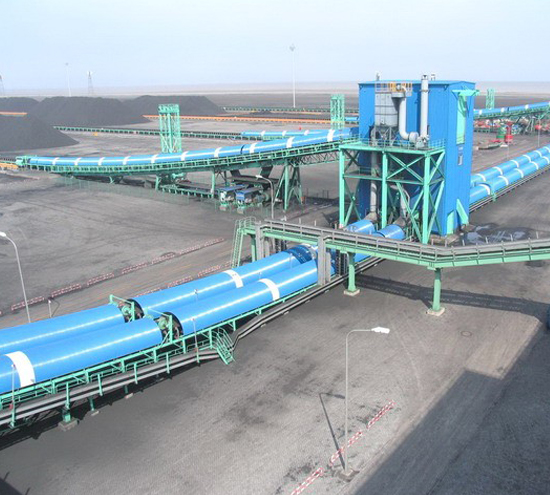belt conveyor systems are an essential component of many industrial processes, from mining and construction to food processing and manufacturing. A belt conveyor system is a continuous loop of materials that transports items from one location to another. Belt conveyor systems can be used to transport products, materials, and packages of various sizes and weights, and are a cost-effective and efficient way to move goods in large volumes. In this article, we will provide a guide for belt conveyor systems, covering the different types of belt conveyors, their components, and their applications.
Types of Belt Conveyor Systems
There are several types of belt conveyor systems, each with their own unique features and advantages. Some of the most common types of belt conveyor systems include:
Slider Bed Belt Conveyors: Slider bed belt conveyors are a simple and cost-effective solution for transporting light to medium-duty loads. They are ideal for applications where the product needs to be transported over a short distance, such as in a manufacturing or distribution facility.
Roller Bed Belt Conveyors: Roller bed belt conveyors are a more heavy-duty version of slider bed belt conveyors. They are designed to transport heavier loads and are commonly used in applications such as loading and unloading trucks, shipping and receiving areas, and assembly lines.
Incline Belt Conveyors: Incline belt conveyors are used to transport products up or down an incline. They are commonly used in applications such as food processing and manufacturing, where products need to be transported from one level to another.
Decline Belt Conveyors: Decline belt conveyors are used to transport products down an incline. They are commonly used in applications such as shipping and receiving areas, where products need to be transported from one level to another.
Belt Conveyor System
Belt Conveyor Components
A belt conveyor system is made up of several components that work together to transport products, materials, and packages. Some of the most important components of a belt conveyor system include:
Conveyor Belt: The conveyor belt is the main component of the conveyor system. It is a continuous loop of materials that carries the products from one end of the conveyor to the other. Conveyor belts can be made from various materials, including rubber, PVC, and fabric.
conveyor rollers: Conveyor rollers are cylindrical devices that are mounted on the conveyor frame and rotate as the conveyor belt moves. They are used to support the conveyor belt and to guide the products along the conveyor.
Conveyor Pulleys: Conveyor pulleys are cylindrical devices that are mounted on the conveyor frame and are used to drive the conveyor belt. They are powered by an electric motor and can be made from various materials, including steel, aluminum, and plastic.
Conveyor idlers: Conveyor idlers are devices that are mounted on the conveyor frame and are used to support the conveyor belt. They are typically made from steel and are designed to withstand heavy loads.
Conveyor Belting Accessories: Conveyor belting accessories include various components that are used to enhance the performance of the conveyor belt. Some common accessories include Belt Cleaners, tracking systems, and belt fasteners.
Applications of Belt Conveyor Systems
Belt conveyor systems can be used in a wide range of applications across various industries. Some of the most common applications of belt conveyor systems include:
Mining and Quarrying: Belt conveyor systems are commonly used in the mining and quarrying industry to transport minerals, rocks, and other materials from one location to another.
Food Processing: Belt conveyor systems are widely used in the food processing industry to transport products such as fruits, vegetables, meat, and poultry.
Manufacturing: Belt conveyor systems are commonly used in manufacturing facilities to transport raw materials, work-in-progress, and finished products.
If you are interested in our products or want to learn more about their specifications, material, and prices, please email us directly at Oversea@zoomryhi.com. We are more than happy to answer your questions.

 ZOOMRY
ZOOMRY

